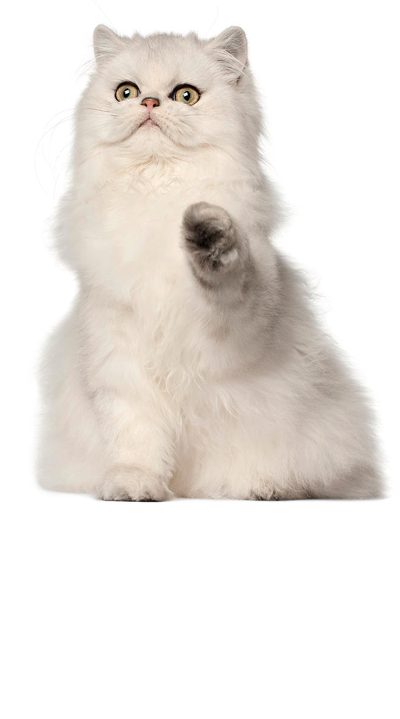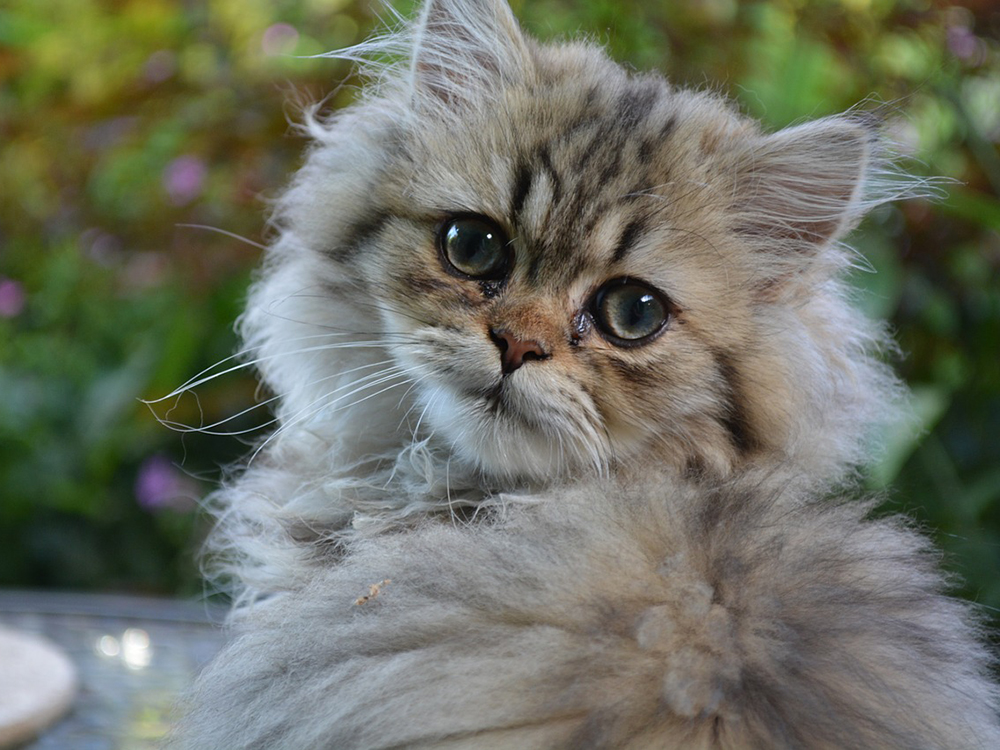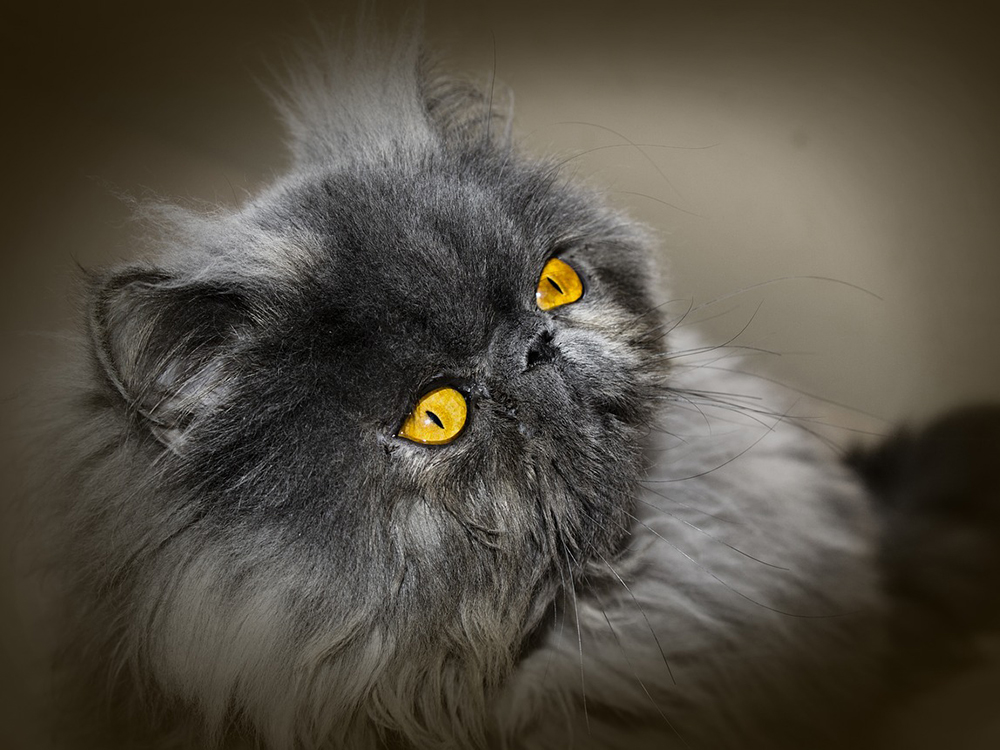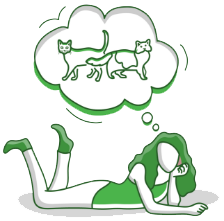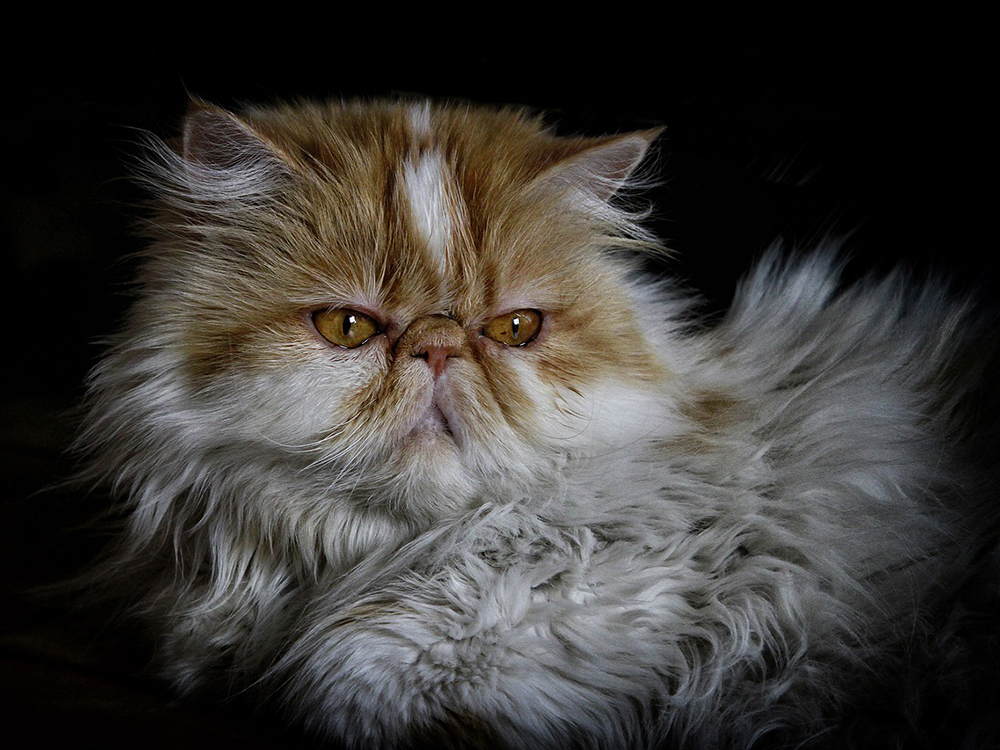
Persian Breed Pictures
Vital Breed Stats
| Weight: | 3 - 5 kg M | 3 - 5 kg F |
| Life Expectancy: | 12 - 15 years |
Breed Characteristics
| Size: |  |
| Grooming: |  |
| Trainability: |  |
| Good with Children: |  |
| Good with other pets: |  |
| Affectionate: |  |
| Active Level: |  |
Give a thumbs up if you love the Persian

0
More About the Breed
History
The Persian’s exact origins is said to be shrouded in mystery. Hieroglyphics dating back to 1684 B.C. have made reference to the exquisite breed, though. However, it was only about a thousand years later that the Persian made its foray to the western hemisphere from its Middle Eastern origins. The earliest documented ancestors of the Persian were reportedly brought to Italy from Persia (modern-day Iran) by Pietro Della Valle in 1620. At about the same time, another explorer brought Persians from Turkey to France. They were then called Angoras, which was the name of the Turkish capital city at that time (presently Ankara).
Recent research has since revealed that the Persian, although known for its Middle Eastern origins, actually share similar genetics with Western European cats. After its introduction to the West, the Persian became a popular fixture at royal courts. In fact, it was Queen Victoria of England’s favourite cat.
Then, in the late 1800s, the Persian made its way to the United States. And when the Cat Fanciers’ Association in America was set up in 1906, one of the first felines to be registered was a Persian. Today, this glamorous cat is one of the most popular breeds in the world.
Appearance and Grooming
The Persian’s size ranges from medium to large, with a muscular and robust body. Its facial appearance has been categorised into the traditional doll face and the peke-face or ‘ultra’ type. The former virtually refers to the original Persian breed, which has a visible muzzle. The latter is the pansy-like variety, with a short, flat, pushed-in face that has its eyebrows, nose, and chin lined up.
The peke-face was developed from a genetic mutation involving a batch of kittens born in the 1950s. Apparently, breeders approved of the mutation and continued to breed the peke-faced Persian over the next couple of years to this day. In fact, the CFA now regards the ultra-faced Persian as the modern standard. However, the peke-faced Persian is prone to having runny eyes due to the scrunched nose and has trouble breathing.
It has short, solid-boned, powerful legs that end in large, tufted, and rounded paws. Interestingly, the front paws have five toes, whilst the rear ones only have four. As such, it prefers to plant its paws firmly on the ground and does not enjoy climbing and jumping high.
The Persian’s most distinct feature is its long, luxurious coat. It is the longest coat of any feline breed, with a long, woolly undercoat and a hairy topcoat. It has a very bushy tail that moves according to the Persian’s emotional temperature. With such a fancy, lushly touchable coat, the Persian is the kind of cat that begs to be petted. Although popularly known for its white or silver varieties, this cat breed has a wide range of colours. Its coat’s hues can range from tortoiseshell to orange.
Due to its sumptuously long coat, the Persian needs to be combed daily. Otherwise, its fur will begin to mat. It also needs professional grooming every six weeks or so. With the peke-face types, it is important to wipe the Persian’s eyes to take care of tear staining and avoid crust build-up.
Temperament and Intelligence
The Persian is beloved for its sweet, playful, and gentle temperament. It is very responsive and exudes a very pleasurable presence. Although it likes attention, it is not demanding. It can be left on its own but not for very long periods. This is a cat breed that enjoys lounging about, draping itself over furniture or at a window, adding a glamorous accent to home interiors.
As an indoor cat, this breed likes its routine and thrives in a secure and peaceful environment. It has not developed the street smarts that can enable it to survive the outdoors for long. As such, it must not be left outside the house without the security and care of a human companion.
Its pleasant nature makes it able to live with other pets, such as dogs and other cats. It also does well with kids, although slightly older ones, making it a great family cat. The Persian does not overly vocalise as it also uses its big, expressive eyes to communicate. When it talks, it speaks in a sweet, melodious tone that is easy on the ears.
Nutrition and Feeding
he Persian’s nutritional needs, like other cats, depend on its age. Once it is four months old, it should be fed chicken and other soft food rich in protein and vitamins. When it reaches twelve months and beyond, the Persian can be fed a mix of dry and wet food. As Persians are carnivores, they should be fed meat proteins and not vegetables or fruit. A good way to determine serving size is by using its age and weight as bases. To support its coat’s health, supplementing this cat breed’s diet with zinc, B vitamins, and fatty acids is recommended.
For every pound of body weight in the Persian’s first year, allocate an ounce of food. Reduce the portion in succeeding years to prevent feline obesity, to which the Persian is prone. Allocate 0.9 ounce per pound of body weight in the next year, and then 0.8 ounce in the year after that. A seven-pound Persian, for example, should be served 5–7 ounces of food.
Health and Exercise
- Polycystic kidney disease (40% prevalence)
- Breathing difficulties (due to brachycephalic features)
- Progressive retinal atrophy
- Skin and eye problems
Cost of Ownership
To acquire a pedigreed Persian, expect to spend anywhere between £250–700 for a kitten. Insurance costs may range from £15.5 (basic) to £27 (lifetime) a month. For food, you may spend around £15–£20 monthly. As for veterinary care costs—vaccinations, boosters, and annual checks—the bill may reach £600 in a year.
Roughly, a Persian owner may spend about £40–£60 per month depending on the insurance coverage. For its lifetime (15–20 years), the expenses can range from £7,200 to £14,400. This does not yet include the cost of acquiring a Persian kitten.
Is a Persian Right for You?
- The Persian is a gentle, sweet cat that can live with families, older children, and other cats and dogs.
- Although the Persian’s coat needs daily brushing, its non-clingy personality balances out its care requirements, making it an overall low-maintenance cat.
- The Persian can shed much during warmer seasons.
- Whilst the Persian can be left on its own, it should not be solitary for very long. It should also be kept in an environment it is familiar with.
- The Persian is an indoor cat that loves to lounge about. As such, playtime is done in short bursts and on its own pace.
